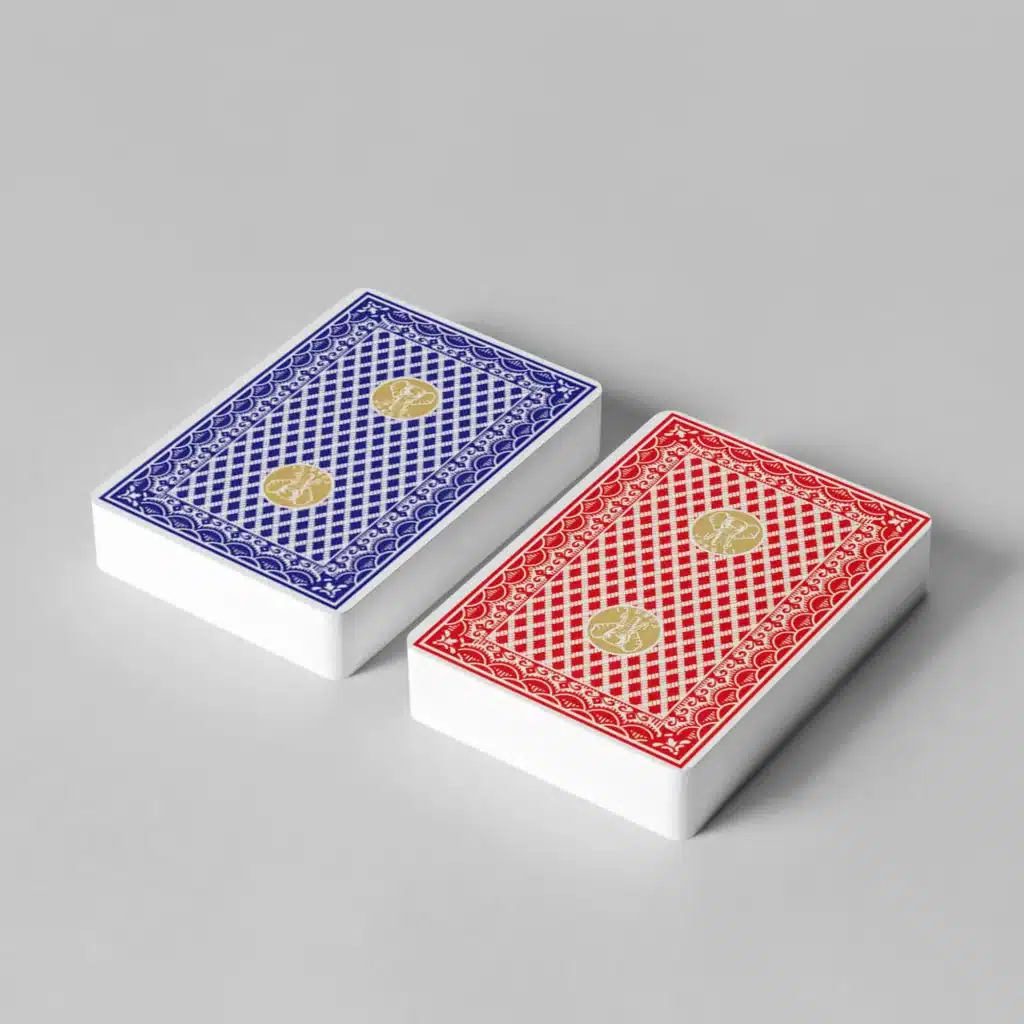With the global custom poker card market surpassing $730 million in 2023 (Source: IBISWorld Industry Report), professional buyers now face challenges shifting from basic pricing inquiries to precision demand matching. Based on in-depth research across 37 international card suppliers, this guide breaks down critical pain points in high-value client decision-making and delivers actionable procurement strategies.

Issue 1: Material Selection Paralysis – Balancing Cost vs. Durability
Industry Reality:
62% of custom poker card complaints stem from material misconceptions (U.S. Playing Card Association 2023 White Paper). Common pitfalls include:
- Mistaking 300GSM art paper for casino-grade stock (requires 400GSM+ plant-based coating)
- Confusing PVC with generic plastics (food-grade PVC costs 37% more)
Solutions:
- Three-Stage Testing Protocol:
- Bend Test: Qualified PVC shows no white marks after 20 folds
- Water Resistance: Quantified droplet comparison (see attached experimental data)
- Friction Coefficient: Measure with portable tools (ISO 8295 recommended)
- Scenario-Based Material Formula:
Corporate Gifts = Bamboo Fiber (25% eco-premium) + Gold FoilingCasino Cards = 100% Cellulose Acetate (3x shuffling lifespan)Educational Cards = Food-Grade Silicone (EU EN71-3 certified)
Issue 2: Printing Process Black Box – Preventing Color Shifts & Peeling
Case Study:
A brand lost $120,000 due to logo color mismatch from unaddressed CMYK-Pantone differences in 50,000 custom decks.
Toolkit:
4D Printing Control Matrix:
| Dimension | Standard | Testing Tool |
|---|---|---|
| Registration | ≤0.02mm error | 20x magnifier + ruler |
| Ink Thickness | 1.2-1.8μm (UV ink) | Ultrasonic thickness gauge |
| Adhesion | 0% peel-off (3M tape test) | ASTM D3359 standard |
| Lightfastness | ΔE≤2.0 after 72h xenon | Q-SUN tester |
Anti-Counterfeit Tactics:
- Microtext printing (≥800dpi resolution)
- Color-shifting ink (15° angle chromatic transition)
- RFID embedding (premium collectibles)
Issue 3: Copyright Compliance Risks – Avoiding Design Infringement
Regulatory Alert:
Under the EU’s 2023 Digital Services Act, platforms face liability for infringing products. High-risk elements include:
- Silhouettes resembling copyrighted characters (40% similarity threshold)
- Unlicensed national symbols (e.g., Statue of Liberty commercial use)
- Ambiguous ownership of AI-generated artwork
Survival Guide:
Copyright Verification Flow:
Client design → TinEye reverse search → Confirm CC0 license/commercial rights → Legal department filing → Add digital watermark
Alternative Resources:
- Royalty-free vectors: Vecteezy Pro (200,000+ poker assets)
- Modular design systems: Canva Poker Templates ($12/month commercial license)
Issue 4: MOQ Dilemma – Small-Batch Customization Breakthrough
Cost Insights:
Traditional 5,000-deck MOQs stem from CTP plate costs (~$280/set), but new solutions exist:
Innovations:
- Digital Printing Networks:
Join HP Indigo’s PrintOS network for:- 100-deck MOQs ($2.8/deck)
- 72-hour global fulfillment
- Shared Die-Cutting:
Collaborate on universal dies (standard size + custom cutouts), reducing tooling costs by 60%
Issue 5: Supplier Trust Deficit – Vetting Reliable Manufacturers
Supplier Checklist:
Less than 18% of factories meet all 5 criteria:
✅ FSC (Forest Stewardship Council) certification
✅ VOC treatment systems for UV ink
✅ IPX7 waterproof test reports
✅ Blockchain traceability (e.g., AntChain)
✅ Live workshop monitoring access
Audit Protocol:
- Remote Inspection: Verify raw material storage humidity (45±5% RH)
- Destructive Testing: 50 automated shuffles on 3 random samples
- Supply Chain Mapping: Trace cellulose acetate to DuPont-level suppliers via SGS reports
